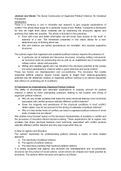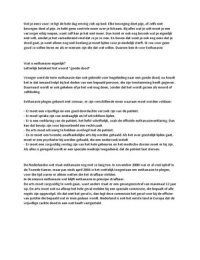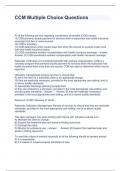Samenvatting
Summary Mobilisation Of Violent Collective Action In An Age Of Terrorism
- Instelling
- Universiteit Utrecht (UU)
Summary of all the literature and readings for the course Mobilisation Of Violent Collective Action In An Age Of Terrorism. The summary contains: - The Social Construction of Organised Political Violence, Jackson and Dexter - Caught in the Crossfire Chapter 4 and 6, Mason - Feeling Social Move...
[Meer zien]












